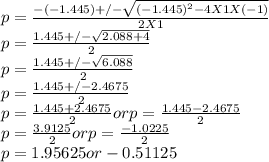
Physics, 03.07.2021 03:20, kaiyakunkle
In the figure, particle A moves along the line y = 31 m with a constant velocity v with arrow of magnitude 2.8 m/s and parallel to the x axis. At the instant particle A passes the y axis, particle B leaves the origin with zero initial speed and constant acceleration a with arrow of magnitude 0.35 m/s2. What angle between a with arrow and the positive direction of the y axis would result in a collision?


Answers: 3
Other questions on the subject: Physics

Physics, 21.06.2019 23:00, alanisalvarez2000
Follow these directions and answer the questions. 1. set up the ripple tank as in previous investigations. 2. bend the rubber tube to form a "concave mirror" and place in the ripple tank. the water level must be below the top of the hose. 3. generate a few straight pulses with the dowel and observe the reflected waves. do the waves focus (come together) upon reflection? can you locate the place where the waves meet? 4. touch the water surface where the waves converged. what happens to the reflected wave? 5. move your finger twice that distance from the hose (2f = c of c, center of the curvature) and touch the water again. does the image (the reflected wave) appear in the same location (c of c)? you may have to experiment before you find the exact location. sometimes it is hard to visualize with the ripple tank because the waves move so quickly. likewise, it is impossible to "see" light waves because they have such small wavelengths and move at the speed of light. however, both are examples of transverse waves and behave in the same way when a parallel wave fronts hit a curved surface.
Answers: 1

Physics, 22.06.2019 06:00, ayoismeisalex
Imagine that someone pushes one marble toward a motionless marble. would there still be action-reaction forces involved in the collision? how might the marbles’ motions be changed? ?
Answers: 1


Do you know the correct answer?
In the figure, particle A moves along the line y = 31 m with a constant velocity v with arrow of mag...
Questions in other subjects:
















